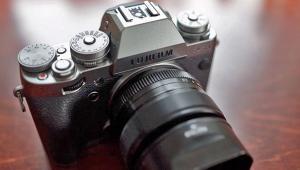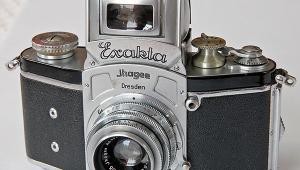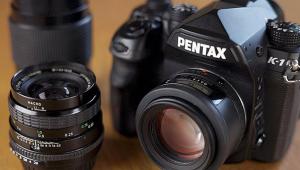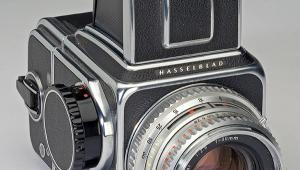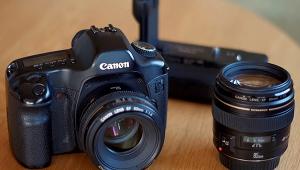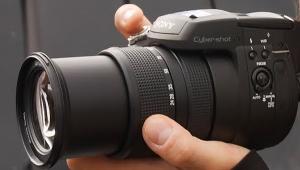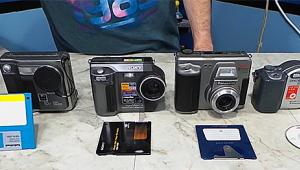Classic Cameras; So You Wanted To Be A Spy; Hit Cameras: “Secret Spy Cameras”
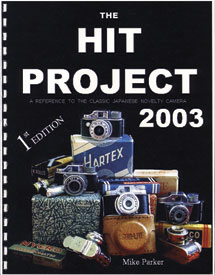 If you’re a baby boomer (and even if you’re not) you might remember the ads in the comic books, science and handyman magazines that touted “Secret Spy Cameras. Fits in the palm of your hand…” And if you’re like me, you mailed off your allowance or lawn mowing money so you could take secret photos of your family and friends. The camera you received was barely qualified to be called a camera and now collectors refer to them as “Hit” cameras. In the 1970s you could get one of these cameras from a 25-cent vending machine!
If you’re a baby boomer (and even if you’re not) you might remember the ads in the comic books, science and handyman magazines that touted “Secret Spy Cameras. Fits in the palm of your hand…” And if you’re like me, you mailed off your allowance or lawn mowing money so you could take secret photos of your family and friends. The camera you received was barely qualified to be called a camera and now collectors refer to them as “Hit” cameras. In the 1970s you could get one of these cameras from a 25-cent vending machine!
I remember my first “Hit” camera. I mailed off my order from the comic book ad, even ordering the extra three rolls of film to go with it. My whole investment was under $3. The package arrived on a Friday, just before we were traveling to my Grandma’s house for a weekend visit. I loaded up my spy camera and spent the weekend shooting what I believed to be amazing candid photos of my family (and irritating the heck out of my little sister). Once home, I mailed off my little film rolls for developing only to receive in the mail a week or so later 30 little gray shiny pieces of photo paper with an occasional shadowy figure, blob of dust or dirt, or light streak across it. Needless to say, I never shot any more secret spy photos again…at least not until I was an adult.
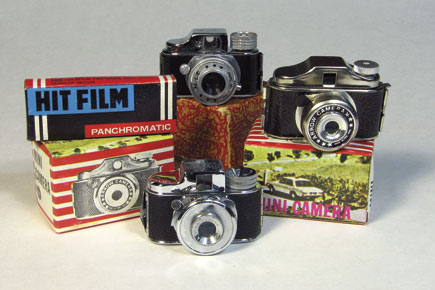 |
|
 |
|
|
The Hit camera is generally defined as a camera that takes 17.5mm wide roll film, has a fixed shutter speed of 1⁄25 sec (and sometimes “B”) and a fixed aperture of f/11, is made of stamped metal, has a simple viewfinder, and just might be capable of taking an actual photo. There are more than 400 cameras that are classified as Hit cameras by collectors of this genre and all are what you might call knockoffs of the Mycro mini camera of the late 1930s and 1940s.
 |
|
|
The Mycro is considered to be the original “Hit” camera but is of much better quality than those that followed. The Mycro itself is a “knockoff” of the even higher quality Midget camera. The novelty Hit-style cameras that we all know and love from the comic book and magazine ads came on the scene around 1950. There are so many similar cameras with so many different names from various makers that it’s nearly impossible to classify them all.
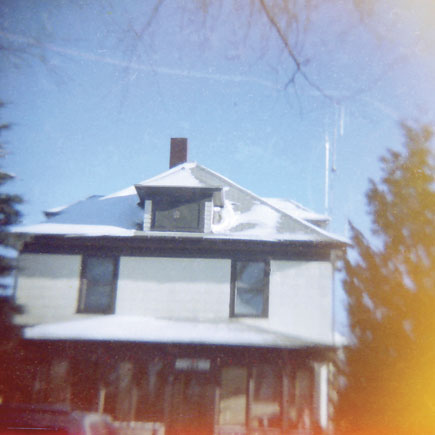 |
|
 |
|
|
Some of the names you may recognize include the Crystar, Arrow, Hit, Emson, Star, and many others. In 2003, collector Mike Parker published a book, The Hit Project: A Reference to the Classic Japanese Novelty Camera. This is the definitive (and only) collectors reference for Hit-style cameras. Now out of print, you can occasionally find a copy at various online bookshops and auction sites. If you’re going to seriously collect Hit cameras you need this book. In it you’ll find an extensive list of names, types, variations, values, and history, as well as lots of illustrations and photos.
 |
|
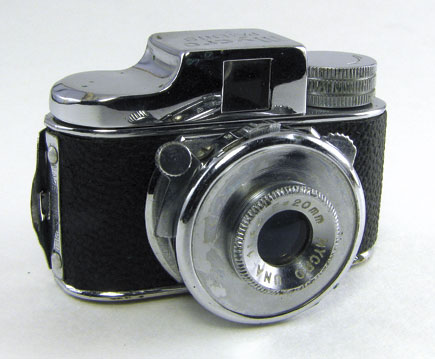 |
|
|
